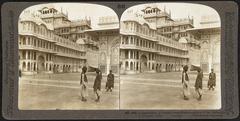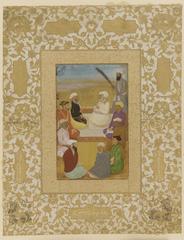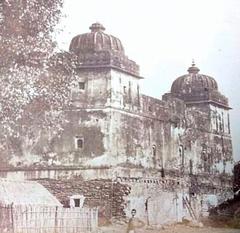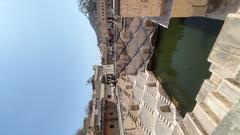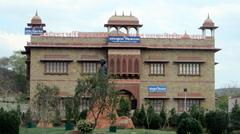Jantar Mantar Jaipur: Visiting Hours, Tickets, and Historical Significance
Date: 14/06/2025
Introduction
Nestled in the heart of Jaipur’s Pink City, Jantar Mantar stands as a monumental testament to India’s remarkable scientific and cultural heritage. Constructed in the early 18th century by Maharaja Sawai Jai Singh II—a visionary king and pioneering astronomer—this UNESCO World Heritage Site is home to 19 massive stone and marble astronomical instruments. These devices were meticulously designed to measure time, track celestial bodies, and predict eclipses with extraordinary naked-eye precision, rivaling contemporary European observatories (ArchDaily; UNESCO).
Jantar Mantar is more than an observatory; it is a symbol of India’s fusion of science, art, and statecraft. Jai Singh II’s passion for empirical astronomy led to the creation of these monumental structures that continue to inspire architects, scientists, and travelers. Set amidst Jaipur’s most iconic sites, Jantar Mantar offers visitors a unique opportunity to explore India’s astronomical legacy.
This comprehensive guide provides up-to-date information on Jantar Mantar’s visiting hours, ticket prices, historical background, accessibility, nearby attractions, and practical tips to help you make the most of your visit (eindiatourism.in; travelsetu.com).
Historical Context and Significance
India in the Early 18th Century
The early 1700s saw the waning of the Mughal Empire and the rise of regional powers. Astronomy was integral to religion, governance, and daily life, with accurate celestial knowledge vital for rituals and agricultural planning. In this era, Maharaja Sawai Jai Singh II emerged as a remarkable ruler who championed scientific advancement (ArchDaily).
Maharaja Sawai Jai Singh II: Visionary and Astronomer
Ascending the throne at age 11, Jai Singh II (1688–1743) was an avid mathematician and astronomer. He studied Sanskrit, Persian, Arabic, and European scientific texts, and was commissioned by Mughal Emperor Muhammad Shah to reform the Indian calendar and astronomical tables (Culture & Heritage; JaipurThruMyLens).
The Five Jantar Mantars
Between 1724 and 1738, Jai Singh built five observatories—located in Delhi, Jaipur, Ujjain, Varanasi, and Mathura. Jaipur’s Jantar Mantar, completed around 1734, is the largest and most sophisticated, embodying a synthesis of Indian, Persian, and European astronomical traditions (Incredible India; ArchDaily).
Political and Religious Role
Jantar Mantar was not just a scientific center. Astronomy served as a tool of statecraft—calendrical calculations dictated royal ceremonies, agricultural cycles, and religious festivals. The city of Jaipur itself was designed in accordance with astrological principles, highlighting the observatory’s central role in urban planning (Incredible India; ArchDaily).
Legacy and Preservation
The observatory was a hub for astronomical learning, employing up to 20 astronomers during Jai Singh’s reign. Though interest declined after his death, restoration efforts and UNESCO recognition in 2010 have preserved Jantar Mantar as a living monument (UNESCO; JaipurThruMyLens; Architectuul).
Key Instruments at Jantar Mantar Jaipur
Jantar Mantar’s 19 instruments are unique for their size, accuracy, and architectural brilliance. Here are the most notable:
Samrat Yantra (Supreme Sundial)
The world’s largest stone sundial, the Samrat Yantra stands 27 meters high. Its triangular gnomon, precisely aligned with the Earth’s axis, measures local time to within two seconds (Inqira; Rajasthan Royal Tourism).
Uses:
- Measures time with remarkable accuracy
- Determines declination and altitude of celestial bodies
- Calculates sunrise, sunset, and meridian passages
Jai Prakash Yantra
A pair of hemispherical bowls set into the ground, with engraved grids, allow observers to directly read celestial coordinates by standing inside the instrument (Rajasthan Royal Tourism).
Uses:
- Determines positions of the sun and other celestial bodies
- Demonstrates celestial coordinate systems
Ram Yantra
Two cylindrical structures with central pillars and marked floors and walls, designed to measure the altitude and azimuth of astronomical objects (Inqira).
Rashivalaya Yantra
Unique to Jaipur, this set of twelve instruments corresponds to the twelve zodiac signs, enabling measurement of celestial latitude and longitude in specific zodiac sectors (beyonder.travel).
Other Instruments
- Laghu Samrat Yantra (Small Sundial)
- Digamsa Yantra (Azimuth measurement)
- Chakra Yantra (Solar declination and hour angle)
- Kranti Yantra (Celestial latitude/longitude)
- Disha Yantra (Compass)
- Yantra Raj (Astrolabe)
- Narivalaya Yantra (Seasonal time measurement)
- Kapali Yantra (Right ascension/declination)
- Dhruva Darshak Pattika (Pole Star locator)
Each is meticulously aligned and calibrated for Jaipur’s latitude, blending scientific accuracy with artistic execution (UNESCO; jantarmantar.org).
Visiting Information
Location
Jantar Mantar is centrally located in Jaipur, Rajasthan, at Gangori Bazaar, near City Palace and Hawa Mahal (eindiatourism.in). It is approximately 13 km from Jaipur International Airport and 6 km from Jaipur Junction railway station.
Visiting Hours
- Open daily: 9:00 AM to 4:30 PM
- Peak tourist seasons may offer occasional extended hours; always reconfirm before your visit (rajasthantourplanner.com)
Entry Fees (June 2025)
- Indian Citizens: ₹50
- Foreign Tourists: ₹200
- Indian Students: ₹15 (with ID)
- International Students: ₹25 (with ID)
- Children under 15: Free
- Camera Fee: ₹10
- Video Camera Fee: ₹30
Composite Tickets: Access multiple Jaipur attractions (Jantar Mantar, Amber Fort, Hawa Mahal, City Palace) for ₹190 (Indians) or ₹500 (foreigners), valid for two days (rajasthantourdriver.com).
How to Reach
- By taxi, auto-rickshaw, or public bus: Easily accessible from any part of Jaipur.
- Nearest railway station: Jaipur Junction (approx. 3 km)
- By air: Jaipur International Airport (approx. 13 km)
Accessibility
- Wheelchair access: Most pathways are accessible, with ramps at major entry points, though some instruments have steps (rajasthancab.com).
- Restrooms and drinking water: Facilities available on-site.
- Shaded areas: Limited; bring sun protection.
Facilities
- Guided tours: Available at the entrance; highly recommended for in-depth understanding.
- Audio guides: Offered in multiple languages.
- Light and sound show: Evening shows narrate Jaipur’s history and Jantar Mantar’s scientific legacy (jcrcab.com).
Duration
- Suggested visit time: 1–2 hours
Best Time to Visit
- October to March (cooler, drier weather)
- Midday (11:00 AM to 1:00 PM): For best sundial demonstrations
- Avoid: Summer heat (April–June) and monsoon season (July–September)
Nearby Attractions
- City Palace: Adjacent royal complex blending Rajput and Mughal styles
- Hawa Mahal: Iconic “Palace of Winds,” short walk away
- Albert Hall Museum: Rajasthan’s oldest museum
- Local bazaars: Johari and Bapu for crafts and textiles (viacation.com)
Visitor Tips
- Carry water, sunscreen, and wear comfortable shoes.
- Photography is allowed for a nominal fee; professional equipment may require permission (eindiatourism.in).
- Engage with guides for demonstrations and historical context.
- Supervise children near instruments.
- Respect the monument—do not climb or touch instruments.
Frequently Asked Questions (FAQ)
Q: What are Jantar Mantar’s visiting hours?
A: Open daily from 9:00 AM to 4:30 PM.
Q: How much are the entry tickets?
A: ₹50 (Indians), ₹200 (foreigners), discounts for students, free for children under 15.
Q: Is Jantar Mantar wheelchair accessible?
A: Yes, most of the site is accessible, though some areas may present challenges.
Q: Are guided tours available?
A: Yes, both guides and audio guides are available.
Q: Can I take photographs inside?
A: Yes, for a small fee; check policies for professional equipment.
Q: When is the best time to visit?
A: October to March, preferably midday for optimal sunlight.
Q: Are there special events?
A: Occasional astronomy workshops and cultural events; check ahead for schedules.
Visuals and Interactive Media
Enhance your experience with virtual tours and interactive maps available on official tourism sites. Explore high-resolution images of the Samrat Yantra, Jai Prakash Yantra, and other instruments for inspiration.
Summary
Jantar Mantar in Jaipur stands as a timeless symbol of India’s scientific and architectural legacy. Maharaja Sawai Jai Singh II’s visionary efforts in the 18th century produced an observatory where monumental instruments like the Samrat Yantra and Jai Prakash Yantra showcase a fusion of artistry, precision, and scientific inquiry. Today, Jantar Mantar invites scholars, tourists, and enthusiasts to experience the rich astronomical traditions of India.
By planning your visit with the latest information on timings, tickets, and tours, and by exploring nearby attractions, you’ll deepen your appreciation for this architectural marvel and its enduring legacy (UNESCO; Rajasthan Royal Tourism; rajasthantourplanner.com; travejar.com).
Plan Your Visit and Explore More
For the best travel experience in Jaipur, download the Audiala app for guided tours, maps, and exclusive content. Follow us on social media for updates on special events and more Jaipur heritage sites. For up-to-date information, always check the official Rajasthan Tourism website or consult local tourism offices before your visit.
References
- ArchDaily
- UNESCO
- Culture & Heritage
- JaipurThruMyLens
- Rajasthan Places
- Travelogy India
- JantarMantar.org
- eIndia Tourism
- Rajasthan Tourism Official Website
- PlaceApp
- Beyonder Travel
- TravelSetu

